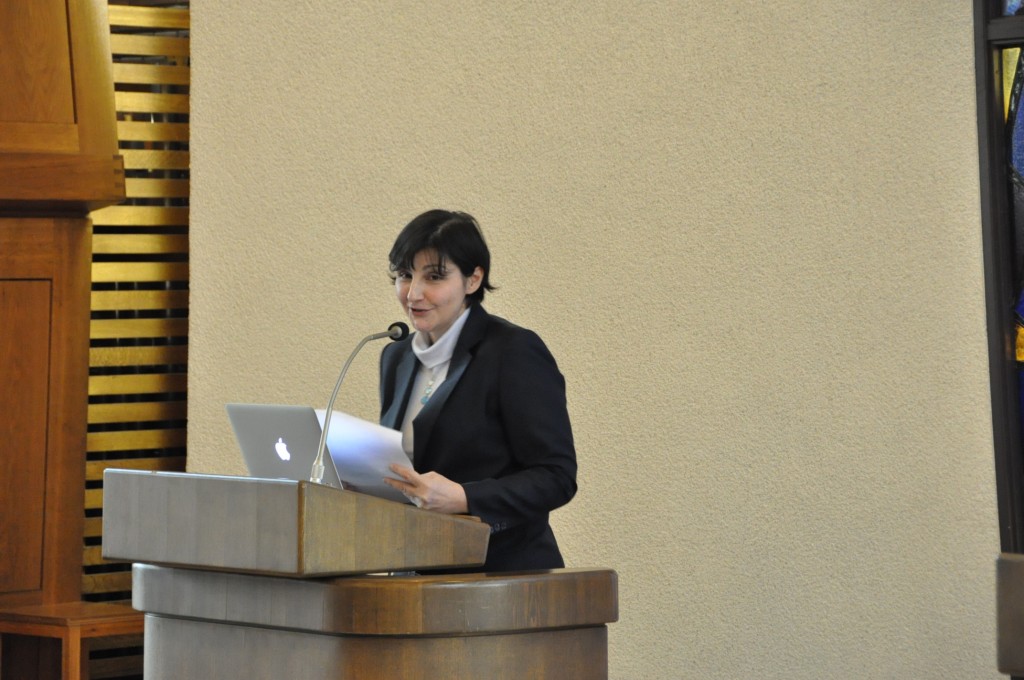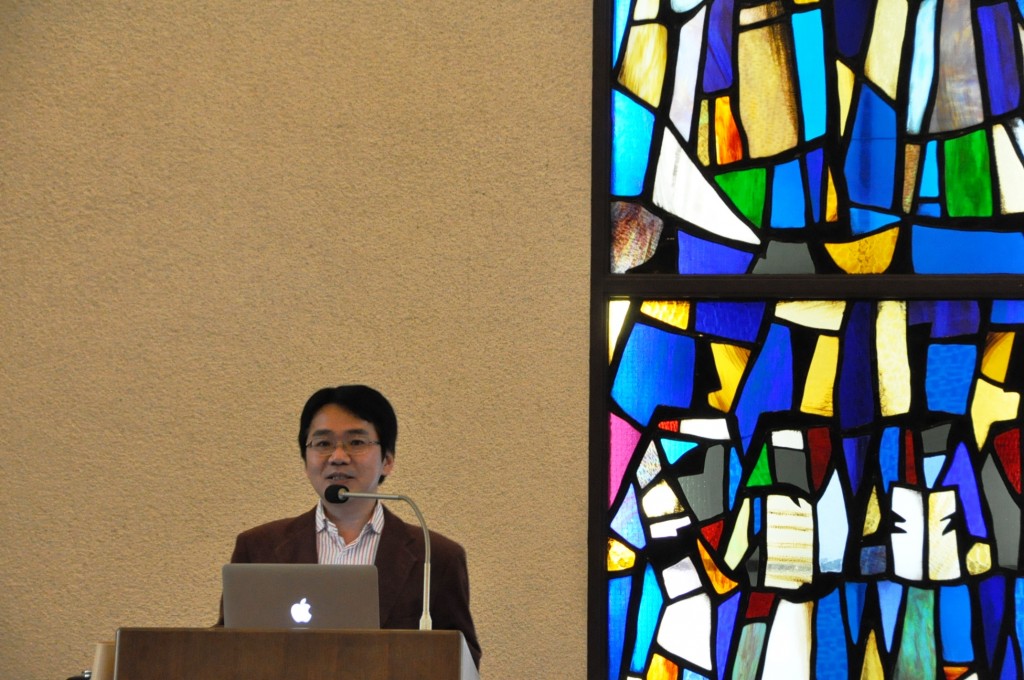Center for Interdisciplinary Study of Monotheistic Religions(CISMOR)Doshisha University
> Public Lectures > Appreciating Dan Brown’s Latest Novel, Inferno: From the Perspective of Art History and Religious StudiesPublic Lectures
Appreciating Dan Brown’s Latest Novel, Inferno: From the Perspective of Art History and Religious Studies
| Date: |
2014/01/29 16:00-18:00 |
|---|---|
| Place: | Divinity Hall Chapel, Imadegawa Campus, Doshisha University |
| Lecture: |
―Anna Takeshita Ruggeri, Associate Professor of Faculty of Foreign Studies, Kyoto University of Foreign Studies ―Katsuhiro Kohara, Professor of School of Theology, Director of CISMOR, Doshisha University |
| Summary: | |
|
On January 29, 2014, Prof. Anna Takeshita Ruggeri (Associate Professor, Faculty of Foreign Studies, Kyoto University of Foreign Studies) and Prof. Katsuhiro Kohara (Director, CISMOR, Doshisha University) gave twin public lectures on the common title of "Appreciating Dan Brown's Latest Novel, Inferno -- From the Perspective of Art History and Religious Studies." Inferno, the latest novel by Dan Brown, well known for his international bestseller The Da Vinci Code, is a thriller mainly set in Florence, Venice, and Istanbul. The two lecturers discussed, mainly from the perspective of art history and religious studies, diverse elements of the Western art, Christianity, and Islam that accentuate the novel, and took a closer look at the background of Inferno. In the first part, Prof. Takeshita gave a lecture titled "Italian literature and art as viewed in Dan Brown's Inferno." She began by confirming an intricate link between The Divine Comedy, an epic poem by Dante Alighieri (1265-1321), especially its section called "Hell," and Inferno ("hell" in Italian). She pointed out a number of passages in the novel that contain inaccuracies and partialities relating to The Divine Comedy, such as the meaning of the word "shadow," the interpretation of the places "reserved for those who maintain their neutrality," and the claim that the universe depicted in "Hell" in The Divine Comedy must have increased the number of churchgoers in those days. Still, the lecturer thought that the epilogue of Inferno, which states that Dante's poem describes the indomitable human spiritual power that endures whatever cruel ordeals, rather than the horrors of Hell, indicated Brown's accurate understanding of the essence of Dante's poem. Prof. Takeshita then proceeded, showing slides of, and commenting on, Italian paintings and buildings that appear in Inferno, such as the Map of Hell by Botticelli; The Battle of Marciano della Chiana by Vasari, with the inscription cerca trova (“search, you will find”); Salone dei Cinquecento; Vasari Corridor; Battistero di San Giovanni (the Baptistery of Saint John); and Basilica di San Marco (Saint Mark's Basilica) in Venice. In the second part, Prof. Kohara spoke under the title "Deciphering the World View of Dan Brown's Inferno." He discussed the concepts of hell, paradise, and purgatory, and the doomsday theory in medieval Europe, referring to their implications for Japan and present-day culture and pointing out the important role played by those Christian notions in the narrative universe of Inferno. This novel is also interesting in that it is partially set in Istanbul, the meeting point of East and the West, which has historically been influenced by both Christianity and Islam, thereby recalling some of CISMOR's past research themes covering the two religions. For example, as Prof. Kohara said, the words of Langdon, the novel's main character, in Chapter 88, refer to the difference between Christianity and Islam in the perception of graphic images and the representation of the sacred. In Christianity, especially in Roman and Orthodox Catholic Churches, iconographic representations of God and saints are treasured, whereas in Islam the graphic representation of the sacred is forbidden and decorative lettering and geometric motifs are used instead. This difference was an important background factor in the controversy over the caricature of the Prophet Muhammad, which was taken up by CISMOR in AY2005-2006. Prof. Kohara concluded his talk by stating that Inferno asks us the question of how humanity can respond to the ethical issue of humanity's possible demise due to overpopulation. The lectures drew an audience of over 100, suggesting the public's keen interest in the theme. (Shunsuke Sugita, Research Fellow, CISMOR) |
|
|
*Admission Free, No Reservation Necessary. *Lecture in Japanese Hosted by: CISMOR Co-hosted by: GRM(Global Resource Management)/ School of Theology, Doshisha University |
|

